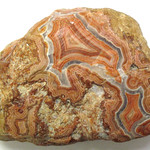Last updated on November 20th, 2023
56. The Crazy Horse Memorial depicts a Native American warrior with long hair sitting on horseback. At the time of its completion, if there is not any other memorial to compete, it will be the world’s largest memorial; however, it is also one of the slowest to build.
57. Korczak Ziolkowski who originally started the sculpting process of the memorial is no more. He thought it would take 30 years to finish the task and today his family is looking after the job that he left undone. The original sculptor’s wish was to go slow with the carving so that it is carved exactly as needed.
58. More than 175 different butterfly species live in SD.
59. The only venomous snake native to South Dakota is the Prairie rattlesnake. They usually live in open grass areas but occasionally stay in wooded areas.

60. South Dakota is home to the poisonous black widow spider, identifiable by the red hourglass mark on its abdomen. Only the black female of this species is poisonous.
61. The brown recluse is one of the most venomous spiders found in South Dakota. But, they are not really native to this state.
62. In the Badlands of South Dakota is Sage Creek Wilderness, home to the black-footed ferret. The ferret is one of the most endangered species in the US.
63. Coyotes are native to South Dakota and primarily found in the Black Hills area and near the Missouri River. These animals are often portrayed as intelligent and savvy by Native Tribes.
64. A tradition to spread sawdust on bar floors started in Deadwood, South Dakota, to hide fallen gold dust. It was used later to soak spilled fluids.

65. The Dakota State University of South Dakota had as many as eight names. That was before they settled on the current name in 1989.
66. Pierre in central South Dakota is one of the country’s smallest state capitals.
67. Cottonwood in South Dakota is one of the smallest towns in this state. Only ten people live in this small town from Jackson County.
68. Due to the permissive divorce laws of Sioux Falls, South Dakota, it has become known as the Divorce Capital. This was the case in the late 1890s and early 1900s.
69. In the late 1940s to the 1950s, South Dakota had a pet called Tootsie, the singing coyote. She was an abandoned pup who sang her way into people’s hearts.
70. The Native American Indian Berry dipping sauce, known as wojapi, is originally from South Dakota. It is made from mixed berries and served with different dishes.
71. Since the 1940s, zebra doughnuts have been a favorite in South Dakota. The marbled doughnuts are fried and glazed, then dipped in chocolate frosting.
About the Flag of South Dakota

1. Design and Symbolism
The flag of South Dakota is a celebration of natural resources, agriculture, commerce, and industry during the early years of statehood.
It has a modified state seal in the middle of a sky-blue field. Golden triangles surround the border, imitating the rays of the sun. Encircling the seal are the words “South Dakota” and its nickname, “The Mount Rushmore State.”
The seal has images of a rural landscape. It depicts hills in the distance, a smelting furnace for mining operations, a boat passing through a river, a farmer plowing with his horses, and cattle feeding on grass.
Along its border are the words “State of South Dakota,” “Great Seal,” and “1889” (when it became the 40th state admitted to the Union). The seal also contains the motto “Under God, The People Rule.”
2. Adoption
South Dakota adopted the current flag on November 9, 1992. The original design is from Ida Anding.
3. Technical Details
The flag uses a proportion of 3:5. The gold text for the state name and nickname should use sans-serif font in capital letters.
4. History
The State Seal
Dr. Joseph Ward, the founder of Yankton College, suggested the design of the Great Seal and the words of the state motto. In 1885, delegates to the Constitutional Convention adopted both.
Two years later, residents of the Dakota Territory voted to divide the state. In 1889, South Dakota kept the old seal but changed the words around the border from “State of Dakota” to “State of South Dakota” to reflect the separation.
The standard colors for the seal came later when Richard Cropp designed the official colored version using magic markers. In 1986, Gov. Bill Janklow commissioned John Moisan to create a new painted version.
The State Flag
In 1909, Senator Ernest May came into the Historical Society office to request a state flag. Ida Anding, the legislative librarian, designed a banner with a blazing sun on a blue background.
The words “South Dakota” and “The Sunshine State” encircle the seal. The senator endorsed this as the first official flag of South Dakota and added the seal on the reverse side with a dark blue field.
In 1963, the cost of manufacturing the complicated flag led to a redesign. Representative William Sahr introduced a bill in which the blazing sun and the seal merged on a blue background. It drastically reduced cost and increased demand for the flag.
In 1992, Representative Gordon Pederson sponsored a bill to change the text from “The Sunshine State” to “The Mount Rushmore State.” It highlights the towering granite sculpture of four US presidents: George Washington, Thomas Jefferson, Theodore Roosevelt, and Abraham Lincoln. The site draws two million people to South Dakota each year.
5. Flag Replacement Attempt
In 2012, Rep. Bernie Hunhoff pushed for a new design based on the artwork of Dick Termes. It features a stylized blazing sun with rays of different lengths and three concentric circles. He later amended the bill to create a flag commission that would solicit submissions from the public. However, deferment stopped its progress.









